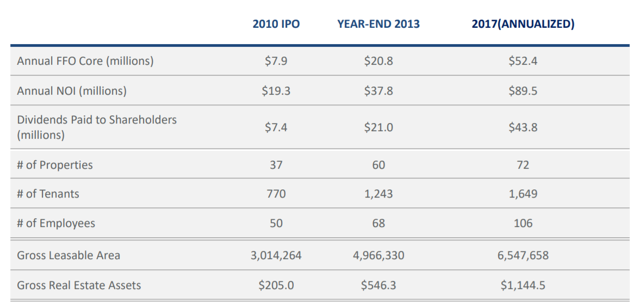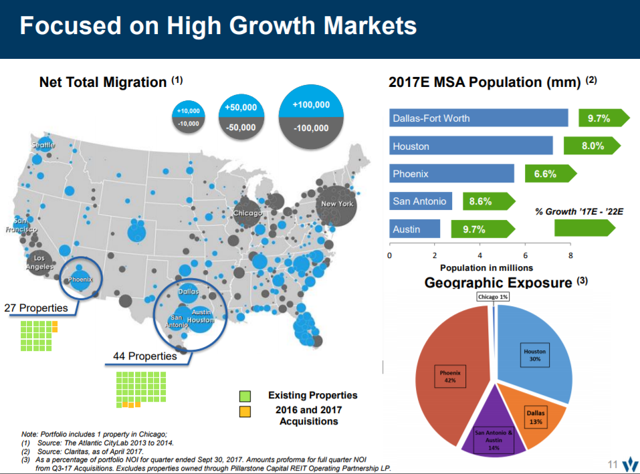31 December 2017
A Knock-Out 2017: Pie's End-of-The-Year Review
-Don't miss this one!
Published on Dec 31, 2017
Views: 25,288
Pie has a look at some of 2017s biggest stories.
*** Anonymous >This will Change Everything You Know...***
Published on Dec 31, 2017
Views: 4,008
This will Change Everything You Know 2018-2019 EVENTS WORLD NEWS
SUBSCRIBE: https://goo.gl/zBkuyB
- Connect with Anonymous -
Subscribe ● http://www.youtube.com/subscription_c...
Anonymous Google+ ● https://plus.google.com/+Anonymous
Anonymous Facebook ● http://facebook.com/anonymousdirect
Anonymous Twitter ● http://twitter.com/anonymousOfcl
Anonymous T-Shirts ● http://anonymousofficial.spreadshirt.com
Anonymous Website ● http://anonofficial.com
Anonymous Mask (Modern) ● http://amzn.to/1U9q8oI
Anonymous Mask (White) ● http://amzn.to/1TrNree
Anonymous Mask (Black & Gold) ● http://amzn.to/1U9qc83
SUBSCRIBE: https://goo.gl/zBkuyB
- Connect with Anonymous -
Subscribe ● http://www.youtube.com/subscription_c...
Anonymous Google+ ● https://plus.google.com/+Anonymous
Anonymous Facebook ● http://facebook.com/anonymousdirect
Anonymous Twitter ● http://twitter.com/anonymousOfcl
Anonymous T-Shirts ● http://anonymousofficial.spreadshirt.com
Anonymous Website ● http://anonofficial.com
Anonymous Mask (Modern) ● http://amzn.to/1U9q8oI
Anonymous Mask (White) ● http://amzn.to/1TrNree
Anonymous Mask (Black & Gold) ● http://amzn.to/1U9qc83
Interactive Map: MEGA REGIONS /An Economic Geography of The United States
What if we drew the map of the United States based on how people actually live?
An Economic Geography of the United States: From Commutes to Megaregions
http://discovery.dartmouth.edu/megaregions/
Instead of dividing the country up into the familiar outlines of states, this map shows what the U.S. might look like if we based our regions on the pattern which commuters weave every day between cities, suburbs, and rural areas.
________________________________________________________________________________
An Economic Geography of the United States: From Commutes to Megaregions
http://discovery.dartmouth.edu/megaregions/
Instead of dividing the country up into the familiar outlines of states, this map shows what the U.S. might look like if we based our regions on the pattern which commuters weave every day between cities, suburbs, and rural areas.
More than 4 million lines on this map show the direction and volume of commuter flows. The white borders show a new geography of megaregions based on an algorithmic detection of related communities.
Zoom in and out to explore the map.
Click on the regions to learn their new names.
Use the layer control in the upper right corner to turn on City Labels if you need help orienting yourself.
Right click on a spot to see the commutes coming and going from that place.
Can you find where you live in this new geography of the U.S.?
This visualization was designed by Garrett Dash Nelson (Dartmouth College) and Alasdair Rae (University of Sheffield) based on research published in the journal PLoS One as “From Commutes to Megaregions: A New Economic Geography of the US.”
Garrett Dash Nelson Contributed equally to this work with: Garrett Dash Nelson, Alasdair Rae
Affiliation Department of Geography and Society of Fellows, Dartmouth College, Hanover, New Hampshire, United States of America
Contributed equally to this work with: Garrett Dash Nelson, Alasdair Rae
* E-mail: a.j.rae@sheffield.ac.uk
Affiliation Department of Urban Studies and Planning, University of Sheffield, Sheffield, United Kingdom
Announcing New GASB 77 Data-Website and 51 State "Roadmaps"
Tracking Subsidies,Promoting Accountability in
EconomicDevelopments > Subsidy Tracker
GASB Statement 77 requires governments that employ Generally Accepted Accounting Principles to report on the aggregate amount of annual tax revenue they are losing as a result of tax abatements.
Subsidy Tracker 2-- which complements the original Subsidy Tracker's collection of company-specific entries -- will periodically add new data as governments make their GASB 77 disclosures.
We hope this information will be useful in setting fiscal priorities for localities and states.
EconomicDevelopments > Subsidy Tracker
The first national compilation of company-specific information on economic development subsidy awards from around the country.
Subsidy Tracker 2 collects data on economic development subsidies that governmental bodies across the United States are reporting in accordance with a new accounting rule adopted by the Governmental Accounting Standards Board (GASB) in 2015. GASB Statement 77 requires governments that employ Generally Accepted Accounting Principles to report on the aggregate amount of annual tax revenue they are losing as a result of tax abatements.
Subsidy Tracker 2-- which complements the original Subsidy Tracker's collection of company-specific entries -- will periodically add new data as governments make their GASB 77 disclosures.
We hope this information will be useful in setting fiscal priorities for localities and states.
Good Jobs First in September 2017 unveiled "Subsidy Tracker 2" - a new online database for tax-break spending records issued thanks to GASB Statement 77 on Tax Abatement Disclosures.
Subsidy Tracker 2 is here: https://www.goodjobsfirst.org/
Statement 77 is the first time the Governmental Accounting Standards Board (GASB) has set forth a rule for governments to account for revenues lost to any kind of corporate tax break for economic development. Good Jobs First was honored in 2015 for its leading role in this landmark reform.
To help activists, journalists and public officials navigate this whole new world of disclosures, Good Jobs First today also publicly posted 51 state-specific "roadmaps" detailing everything one needs to get started exploring the data. (For those who have privately received iterations of the roadmaps over the past year: today's postings include many state entries that have been updated to reflect early disclosures.)
The 51 GASB 77 roadmaps are here https://www.goodjobsfirst.org/
__________________________________________________________________________________
| ||
|
30 December 2017
IN REAL ESTATE WE TRUST: Here's Whitestone REIT
This Promising REIT Has A 7.8% Covered Yield
And 12% Upside

And 12% Upside
About: Whitestone REIT (WSR)
Source: https://seekingalpha.com
____________________________________________________________________________________
Blogger Insert:
_____________________________________________________________________________________
Summary
Whitestone REIT is an interesting dividend vehicle for income investors.
The REIT has grown its portfolio, NOI and core FFO/share at a fast clip since its IPO in 2010.
Whitestone REIT's dividend stream is affordable; income investors pay just about eleven times core FFO.
Shares are undervalued and should be able to trade at ~12.5x core FFO.
Whitestone pays a $0.095/share monthly dividend. An investment in WSR yields 7.8 percent.
Whitestone REIT's dividend stream is affordable; income investors pay just about eleven times core FFO.
Shares are undervalued and should be able to trade at ~12.5x core FFO.
Whitestone pays a $0.095/share monthly dividend. An investment in WSR yields 7.8 percent.
Whitestone REIT (WSR) is an underrated real estate investment trust in my opinion that has potential to increase its valuation multiple while providing income investors with a stable stream of dividend income. Whitestone REIT is active in high-growth, high-potential markets, and has robust dividend coverage stats for an eight percent yielder. An investment in Whitestone REIT comes with an attractive, covered 7.8 percent yield and monthly distribution frequency.
Whitestone REIT is a smaller, yet promising REIT in the increasingly crowded REIT sector. While most investors would consider buying large real estate investment trusts like Realty Income, Corp. (O) or National Retail Properties, Inc. (NNN), smaller REITs like Whitestone REIT make attractive value propositions, too.
Whitestone REIT - An Overview
Whitestone REIT has come a long way since its IPO in August 2010. The REIT has aggressively grown its real estate presence in the U.S. through acquisitions. At the end of the September quarter, Whitestone REIT had 72 properties comprising 6.6 million square feet in its real estate portfolio.
Whitestone REIT typically invests in markets with strong economic fundamentals, for instance above-average population growth.
Source: Whitestone REIT
Long/short equity, special situations
Happy New Year 2018 Maricopa County > 3 Days HIGH POLLUTION ADVISORY

| ||
This HPA is due to particle pollutant levels expected to accumulate enough to exceed the federal health standard for PM2.5.
People with heart or lung diseases, older adults and children are most likely to be affected by particle pollution. Particles in the PM2.5 size range are able to travel deeply into the respiratory tract, reaching the lungs and can cause short-term health effects such as eye, nose, throat and lung irritation, coughing, sneezing, runny nose and shortness of breath. Exposure to these fine particles can also affect lung function and worsen medical conditions such as asthma and heart disease.
BACKGROUND
The Maricopa County Air Quality Department (MCAQD) is a regulatory agency whose goal is to ensure federal clean air standards are achieved and maintained for the residents and visitors of Maricopa County. The department is governed by the Maricopa County Board of Supervisors and follows air quality standards set forth by the federal Clean Air Act. The department offers air quality information and resources on its Clean Air Make More website: cleanairmakemore.com.
___________________________________________________________________
About ADEQ

Under the Environmental Quality Act of 1986, the Arizona State Legislature established the
|
28 December 2017
Going Rogue Again With Rogue Columnist Jon Talton
Your MesaZona Blogger says Hooray! for this real-life reporter and purveyor of pulp fiction.
Here's a teaser for him most recent posting:

These are the times that try men's souls. The summer soldier and the sunshine patriot will, in this crisis, shrink from the service of their country; but he that stands by it now, deserves the love and thanks of man and woman. Tyranny, like hell, is not easily conquered; yet we have this consolation with us, that the harder the conflict, the more glorious the triumph.
— Thomas Paine, December 23, 1776
__________________________________________________________________________________
"We've made it through the first year of the presidency of Donald Trump (let that name attached to that title sink in) without a nuclear war with North Korea. But there's next year.
Meanwhile, despite all the speculation and hope for a Democratic wave in the fall, great damage has been done to the republic. Total Republican control of the federal government resulted in the passage of a ruinous tax bill. Among its worst consequences will be the opportunity costs — no nice things for us, such as high-speed rail or rail transit for our metropolitan areas — because $1.5 trillion will be looted from the Treasury for the very rich. . . "
__________________________________________________________________________________
Blogger Note: Some snippets from the current piece are included for you interest below.
Here's a link to Jon Talton's blog
I've had an extended discussion of our new abnormality with a journalist. He's a very smart guy but unable to publish his insights without losing his job. So I thought I would offer a few here to get your reaction:
I think the tax cuts issue needs to first, "break the frame," and then people on the left end need to "name it and frame it." Frame-breaking is replacing the assertion-rebuttal trope of media communication with a counter-assertion in place of a rebuttal . . .
So why does the GOP insist upon reducing the tax burdens of the rich when their claims of job creation and economic stimulus not only never materialize — on but also follows a pattern of asset bubbles, overheated investments, asset crashes and recessions? . . .
Trump, the GOP and the Deplorables are three points of an unholy trinity. If they find any success, like they did with tax cuts, they will crystallize around it to remain a coherent political entity. Success creates a positive feedback loop that can only be stopped by a negative feedback loop. Just wait for the recession. . .
What will be the point of failure for the coming economic downturn? I see it from cryptocurrencies (a computer simulacrum of currency flows in theory and practice, then using the simulacrum to lay claim to real goods — gee, what can go wrong?), . .
Here's a teaser for him most recent posting:
Rogue Columnist >The Winter of Our Discontent
These are the times that try men's souls. The summer soldier and the sunshine patriot will, in this crisis, shrink from the service of their country; but he that stands by it now, deserves the love and thanks of man and woman. Tyranny, like hell, is not easily conquered; yet we have this consolation with us, that the harder the conflict, the more glorious the triumph.
— Thomas Paine, December 23, 1776
__________________________________________________________________________________
"We've made it through the first year of the presidency of Donald Trump (let that name attached to that title sink in) without a nuclear war with North Korea. But there's next year.
Meanwhile, despite all the speculation and hope for a Democratic wave in the fall, great damage has been done to the republic. Total Republican control of the federal government resulted in the passage of a ruinous tax bill. Among its worst consequences will be the opportunity costs — no nice things for us, such as high-speed rail or rail transit for our metropolitan areas — because $1.5 trillion will be looted from the Treasury for the very rich. . . "
__________________________________________________________________________________
Blogger Note: Some snippets from the current piece are included for you interest below.
Here's a link to Jon Talton's blog
About Rogue Columnist
www.roguecolumnist.com/about.html
THE BLOG: Rogue Columnist focuses on sustainability, urban issues and politics in the Great Disruption that is our future. Phoenix and Arizona are a specialty. THE WRITER: Jon Talton is a journalist and author. His 12 novels include the David Mapstone mysteries, the Cincinnati Casebooks and the thriller "Deadline Man.
_______________________________________________________________
I've had an extended discussion of our new abnormality with a journalist. He's a very smart guy but unable to publish his insights without losing his job. So I thought I would offer a few here to get your reaction:
I think the tax cuts issue needs to first, "break the frame," and then people on the left end need to "name it and frame it." Frame-breaking is replacing the assertion-rebuttal trope of media communication with a counter-assertion in place of a rebuttal . . .
So why does the GOP insist upon reducing the tax burdens of the rich when their claims of job creation and economic stimulus not only never materialize — on but also follows a pattern of asset bubbles, overheated investments, asset crashes and recessions? . . .
Trump, the GOP and the Deplorables are three points of an unholy trinity. If they find any success, like they did with tax cuts, they will crystallize around it to remain a coherent political entity. Success creates a positive feedback loop that can only be stopped by a negative feedback loop. Just wait for the recession. . .
What will be the point of failure for the coming economic downturn? I see it from cryptocurrencies (a computer simulacrum of currency flows in theory and practice, then using the simulacrum to lay claim to real goods — gee, what can go wrong?), . .
This creates two incompatible and irreconcilable frames on how to analyze society with the progression of time. If you are liberal, you see the broadening definition of individualism to non-white non-males as justice, the righting of a historical wrong. If you are a conservative, you see justice as a personal affront and a humiliating defeat. You see equality as a degradation in cultural status and a devaluation of self-worth; taking of half of everything you have or half of your self worth to give to a nobody and then meeting that nobody halfway. So, yeah, the "good old days" were really good for certain folk, but that's because they yearn for a return to a position of power and status that has been lost and gone forever.
The thing is, it's effective because that exclusive power is a "felt experience" that has been transmitted across generations in a way that liberals stopped transmitting right about the time of the Vietnam war and Robert F. Kennedy's assassination. Since then, the prevailing attitude toward power is that it is an inherently corrupting and corruptible phenomenon that is to be categorically renounced. It's very idealistic and hopeful at a time of violent conflict at home and abroad. The problem was that the sentiment was shared only by a population whose only encounter with power was being on the receiving end of it. A similar renunciation of power did not occur on the right, who began gathering up the power neglected by the left.
SPOILER ALERT: In 50 years since then, the left has only grown only more estranged from power while the right has only grown more enamored of it. The right is legitimizing authoritarianism through the capture of legitimate institutions and the testing of cultural boundaries that go unchallenged. The left, on the other hand, developed an elaborate vocabulary of victimhood and meditated too deeply on oppression as the basis of social relationships. This represents the collective effort of the left experience: sjwiki.org You have to consult that website, not because you want to internalize some or all of its ideology, but if you ever see a young person — say on Twitter, a college campus or a protest — and wonder why they speak a language that sounds like English but carries an emotional connotation not explained by an objective definition of the term, you'll get some idea of their outrage.
_______________________________________________________________
outrage
2017 In Review | Area Development Online + Site/Facility Planner Insider
As the year draws to a close, Area Development presents you with several insightful articles that ran in 2017. The information and advice they contain is worth another look and will be valuable to you and your company as you plan for a successful 2018. Our staff wishes you a happy and prosperous New Year!
|
Q2 2017How Technology Will Overcome DemographicsRandy Thompson, Senior Managing Director, U.S. Corporate Project Management, Cushman & Wakefield |
Q3 2017How U.S. Manufacturers Can Navigate the Route to the New Trade PolicyRobert McCutcheon, U.S. Industrial Products Leader, PwC
Manufacturers need to prepare now for prospective trade policy changes so that they may recalibrate their supply chains if need be.
| ||
Q3 2017Women in Manufacturing: Closing the GapNoelle Salerno, Consultant, Avalanche Consulting, Jennifer Vernon, Consultant, Avalanche Consulting
The manufacturing industry is recruiting and advancing women to close the talent gap.
| ||
2017 Auto/Aero Site GuideThe Automotive Industry: On The Eve Of DisruptionDennis Cuneo, Managing Partner, Fisher & Phillips
Electrification and autonomous driving are just two of the forces disrupting the auto industry, as incumbent automakers compete with new entrants into the field.
| ||
2017 Food ProcessingDinner on the Front Porch: How E-Commerce Is Affecting the Food IndustryJeff Dearduff, Corporate Director, Baking & Snack, The Austin Company
As consumers receive more and more of their food through e-commerce, food manufacturers, assemblers, and distribution networks are going to have to think differently.
| ||
Q4 2017Utilizing Advanced Technologies to Evaluate the Location DecisionRajiv Jetli, U.S. Industrial Products Operations & Advanced Manufacturing Leader, PwC
Although manufacturers are using advanced technologies, including artificial intelligence, in their operations, they’ve yet to leverage these advances in the site selection process.
| ||
Q4 2017Industry Sea Changes Affecting U.S. Shipping GatewaysWalter Kemmsies, Ph.D., Managing Director, Economist and Chief Strategist, U.S. Ports, Airports and Global Infrastructure Group, JLL
Damage from recent hurricanes could have a ripple effect across U.S. seaports, underscoring the rising demand for more sophisticated industrial real estate and infrastructure.
| ||
Data Centers 2017Tackling The Risk Factors of Third-Party Data CentersSean Brady, Managing Director, Tenant Advisory Group, Cushman & Wakefield
Third-party data center users need to assemble an experience team — including IT professionals, engineers, real estate advisors, attorneys, and others — to help reduce risks on all fronts.
| ||
Q1 2017It’s Your Move: Critical Considerations When Relocating Corporate HeadquartersDean J. Uminski, CEcD, Principal, Crowe Horwath
The improving economy is making it more financially feasible for companies to relocate their corporate headquarters, but such a move calls for careful consideration of a variety of factors that will determine the ultimate success — or failure — of relocation.
|
Subscribe to:
Posts (Atom)
Beijing has condemned Washington’s deployment of intermediate-range missiles in the Asia-Pacific region
Beijing declares that Washington's decision to install medium-range ballistic missiles poses a serious danger to the stability and pea...
-
Apr 22, 2024 Spain to Modernise Air Defence Capabilities With New NASAMS Acquisitions The government of Spain has announced its decision...
-
Air Defenders from Charlie Battery, 5th Battalion, 4th Air Defense Artillery Regiment of the US Army joined several allied units for a ser...























